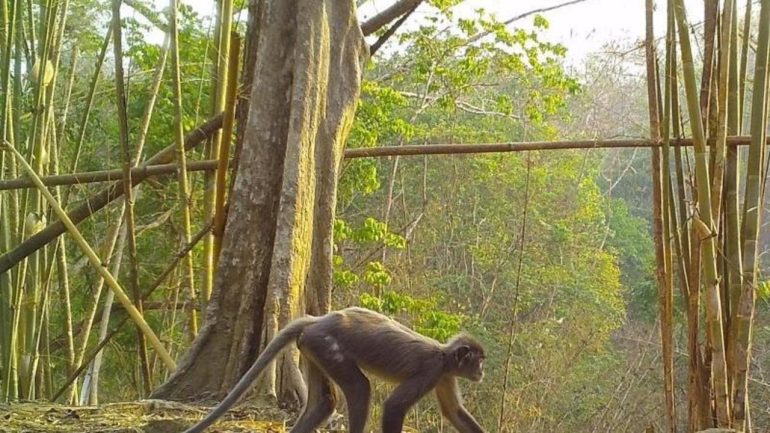WWF
In the Southeast Asian region, researchers from around the world discovered many new plant species, reptiles, amphibians – and even previously unknown mammals.

The so-called Pope Langur was identified as a separate species.
Photo: WWF Myanmar / DPA
Bangkok (DPA). In just one year, scientists around the world have discovered 224 previously unknown animal and plant species in countries bordering the Mekong in Southeast Asia.

The frog Leptobrachium inatum was discovered in Vietnam and Cambodia.
Photo: Jodi Rowley / DPA
These include a two-tone gecko that looks like it has been painted yellow on the front, and a pungent-scented flower of the ginger family that is used in Thailand as a substitute for stink bugs when making chili paste. is done. This has come to light from a WWF report. In addition to 155 plants, 35 reptiles, 17 amphibians, 16 fish and one mammal were documented.

Achlinus jugorum is a new species of rare silent snake.
Photo: Aryeh H. Miller/dpa
The mammal is a monkey: the poop langur was identified as a separate species based on fecal specimens and historical museum specimens. In 2018, WWF and Fauna and Flora International (FFI) managed to photograph rare animals with the technical name Trachypithecus popa, which is named after the extinct volcano Mount Popa in East Burma.

The gecko nemaspis selenolagus was discovered recently.
Photo: Mali Naidungchan / DPA
Great Biodiversity in the Mekong Region
According to the Environmental Protection Organization, the total number of animal and plant species discovered in Thailand, Cambodia, Laos, Vietnam and Myanmar since 1997 is now 3,007. Stefan Ziegler, Southeast Asia consultant at WWF Germany, said the Mekong region is undoubtedly a “heavyweight worldwide” in species discovery.
“It is home to some of the best-known and most endangered species in the world, such as the tiger and the Mekong giant catfish.” Habitats must be protected and protected due to the vast biodiversity. “If we lose the Mekong region as a biological hotspot, we will lose a great deal of global biodiversity,” says Ziegler.
leader vietnam
According to the report, most of the new species were discovered last year (91) in Vietnam, followed by Thailand (69). In the city of Lung Kang, Vietnam, an expedition team discovered a dark purple snake with an unusual scale pattern. In the end, it turned out to be a new species (Achalinus zugorum) from an already rare group of silent snakes.
Also in Vietnam and Cambodia, researchers described a previously unknown species of spadefoot frog with a crescent-shaped iris (Leptobrachium inatum). And in Myanmar, a cave fish (Kayashistura localaensis) has been discovered with a colorless body, underdeveloped eyes, and an unusual fin spine on the chest.
The WWF report brings together the work of hundreds of scientists working for universities, conservation organizations and research institutions.
© dpa-infocom, dpa:220126-99-851541/2

Web guru. Amateur thinker. Unapologetic problem solver. Zombie expert. Hipster-friendly travel geek. Social mediaholic.





